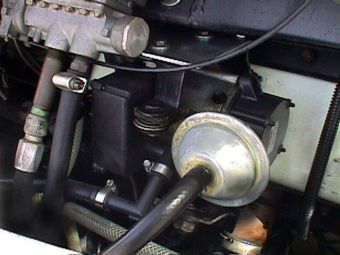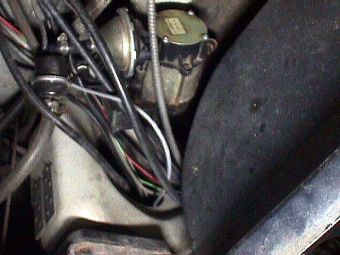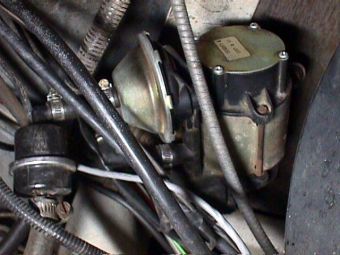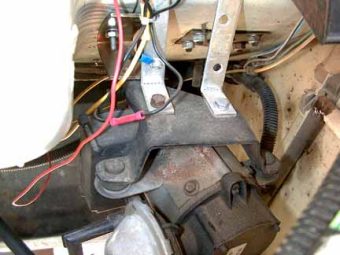

Buick
Cadillac
Chevrolet
|
Oldsmobile
Pontiac
|
 | The pictures show three different mountings. I have seen about five different mountings. The first mounting is on the floor board near the windshield wiper motor. This mounting requires a homemade bracket to mount the pump in the position shown. This picture does not show the carbon filter going to the motor but this is necessary to keep residues from the engine and vice versa. Notice the Right angle hose that exits the pump. The adaptor comes with the pump and attaches hose to the brake vacuum booster. This connection is hard to see in the other mounting pictures. |
| The second mounting is in front of the driver side wheel well liner. The picture is looking up, in front of the driver front wheel, with the wheel well liner on the right. They told me a lot of room was available to mount the pump in front of the liner using wood screws. I did not have a lot of room on mine and had a hard time finding enough room to attach the pump to the wood. |  |
 | This is a great location since no brackets are required and the hose removed from the brake booster will reach the pump and a short new hose from the pump easily reaches the brake booster. Replacing the original hose to the brake booster is very easy if required. Note the small black filter in the input hose to the pump. |
| The third mounting is in a different location using a homemade bracket. |  |
member of |
||||
 |
 |
Analysis by |
||